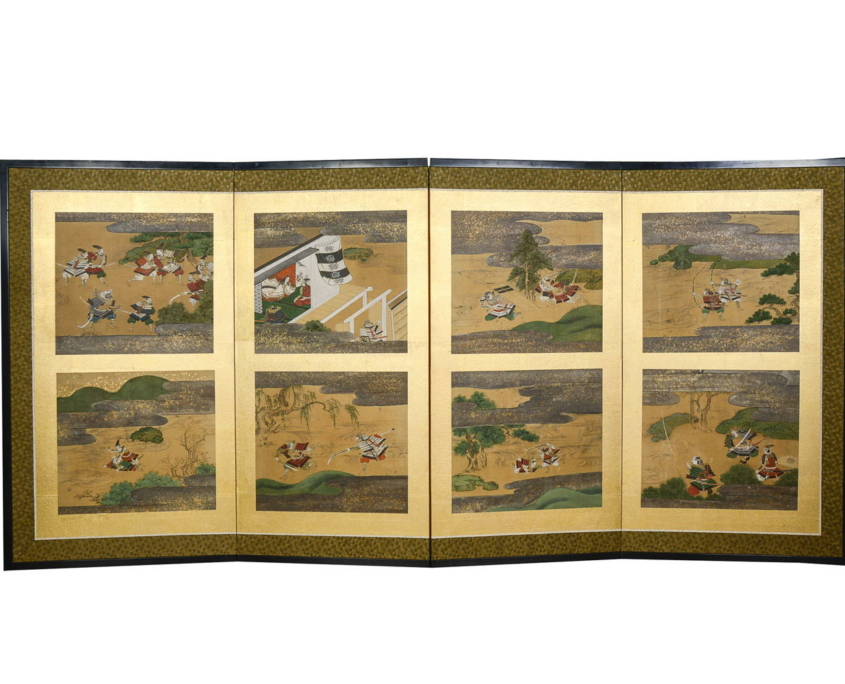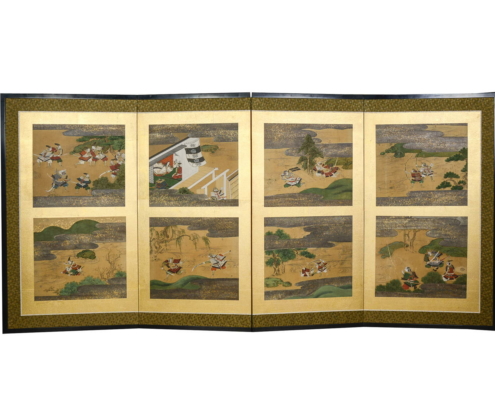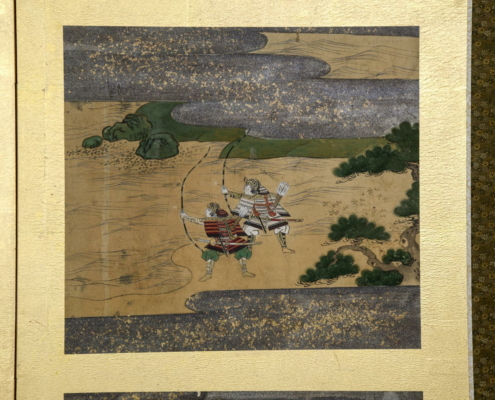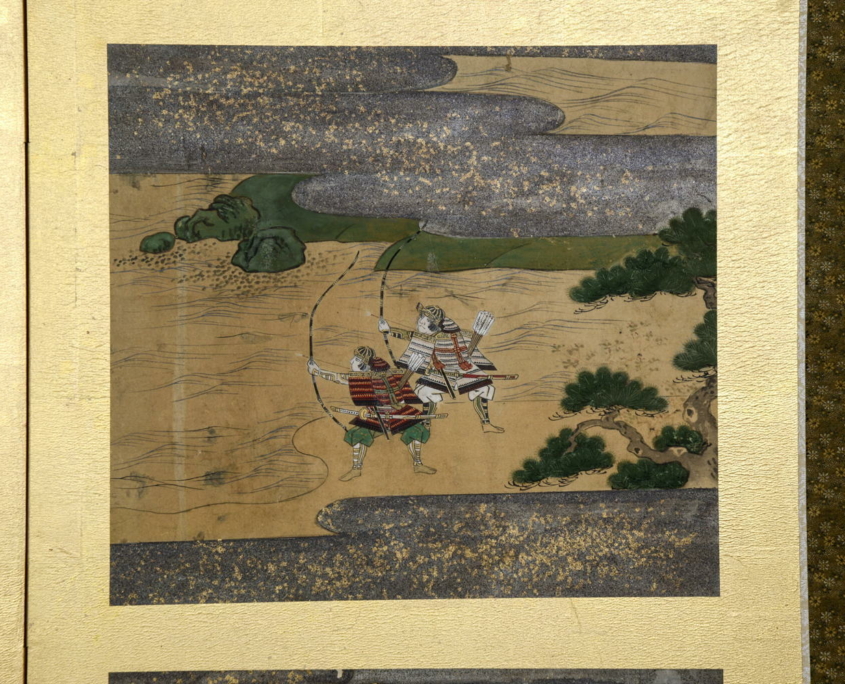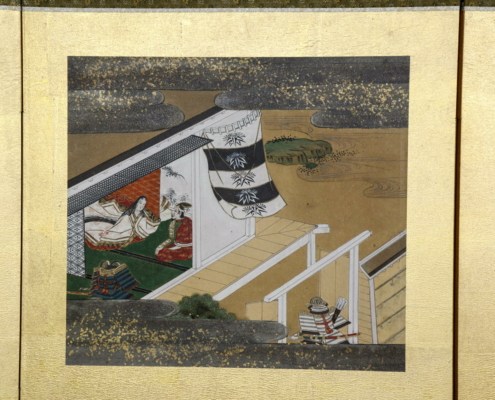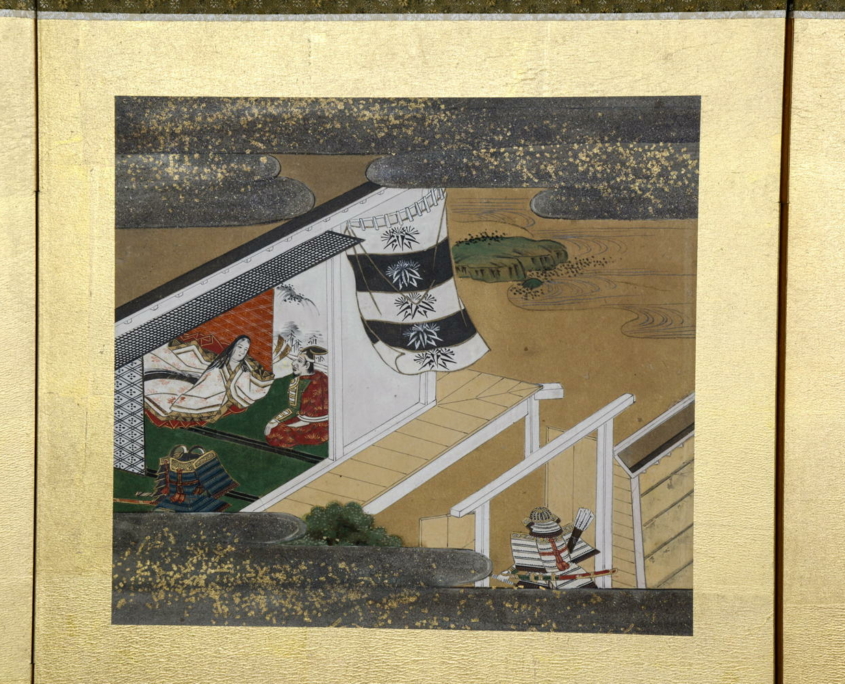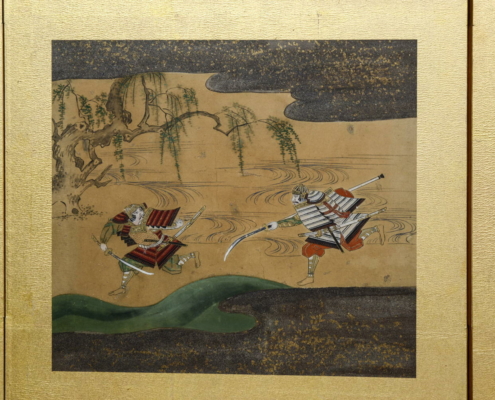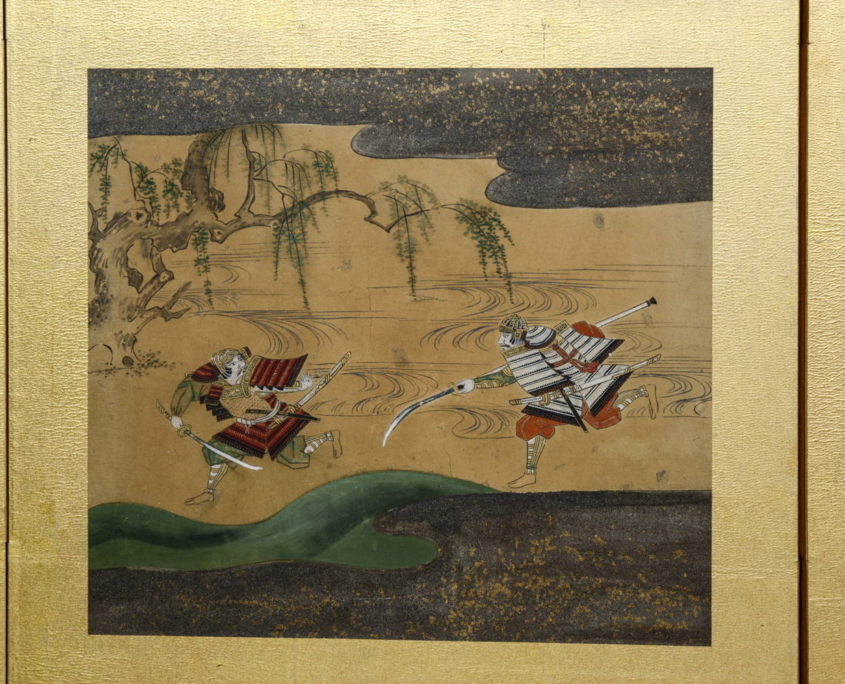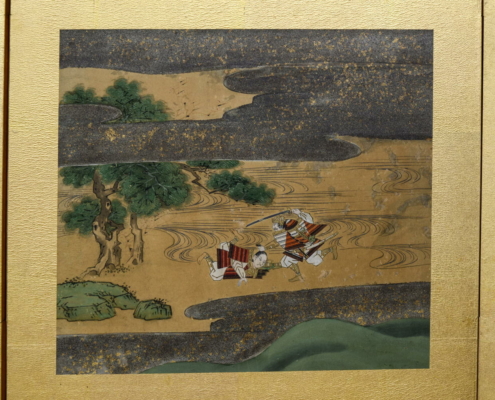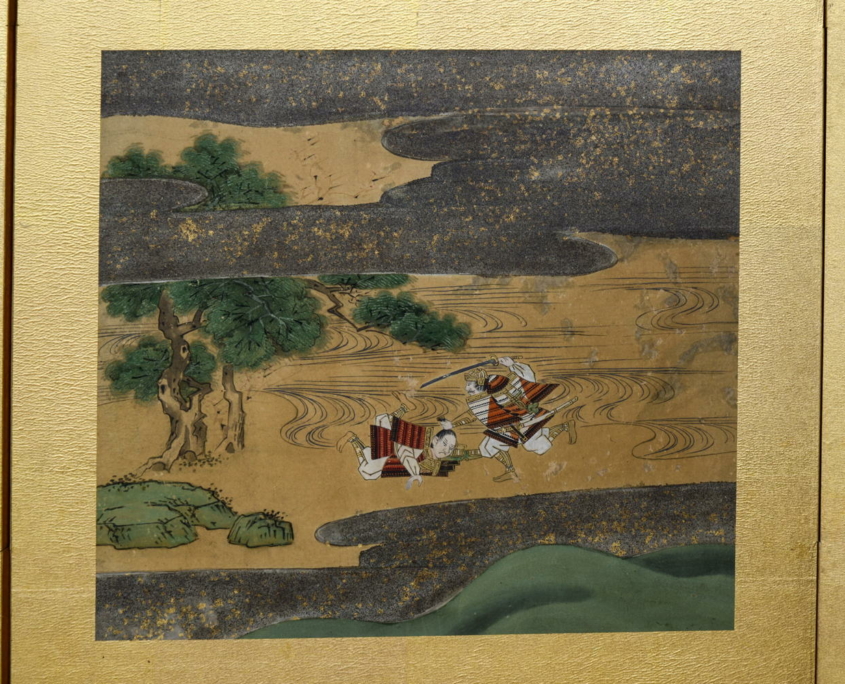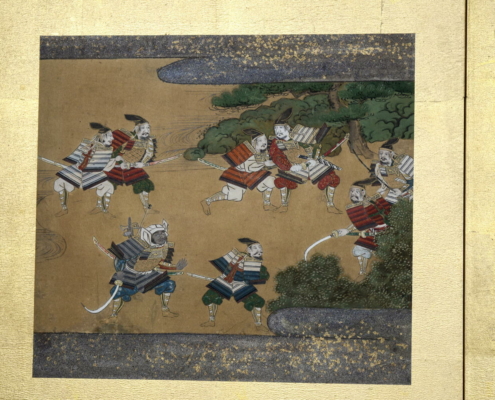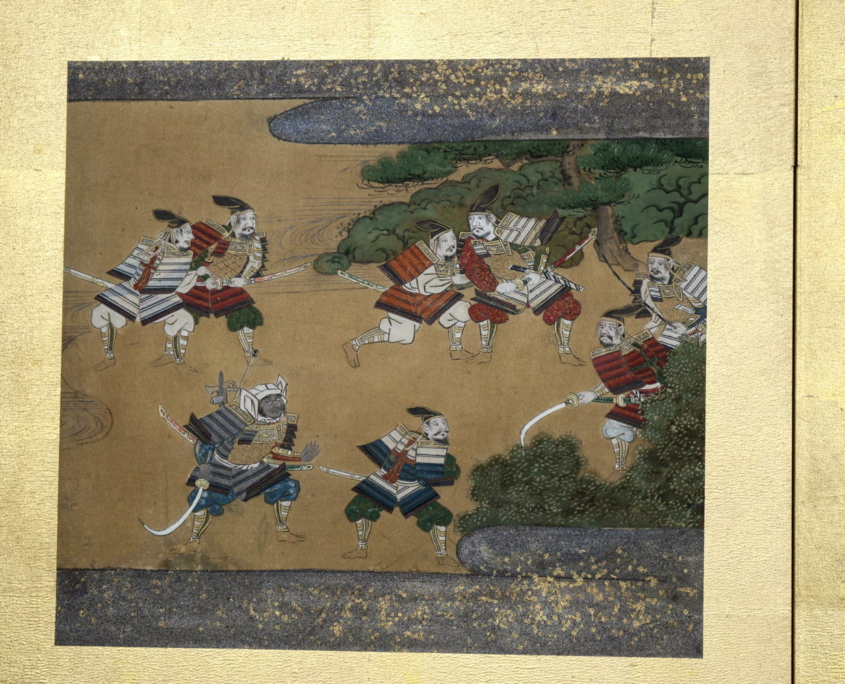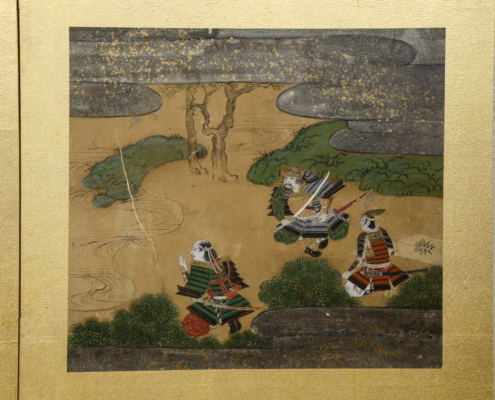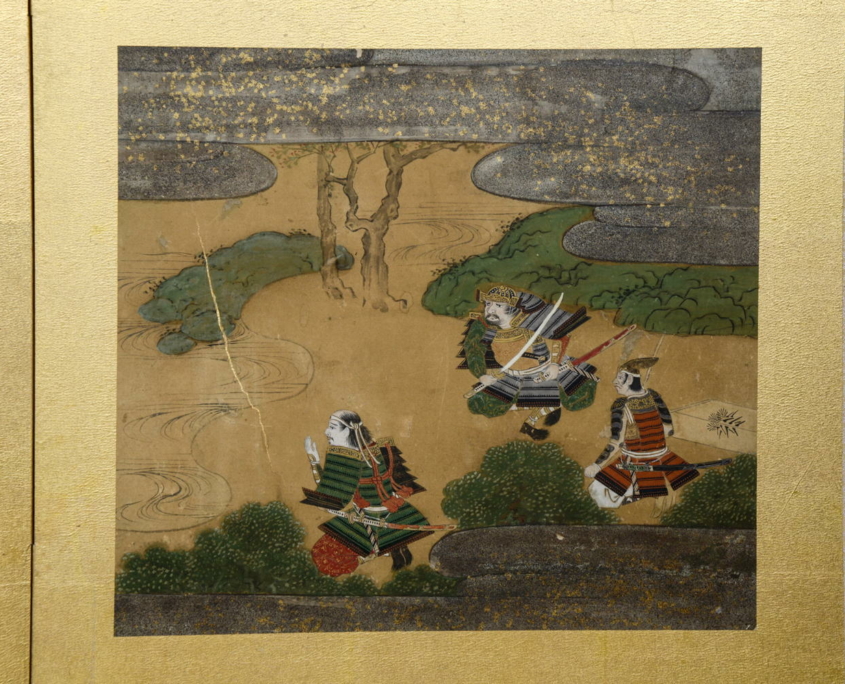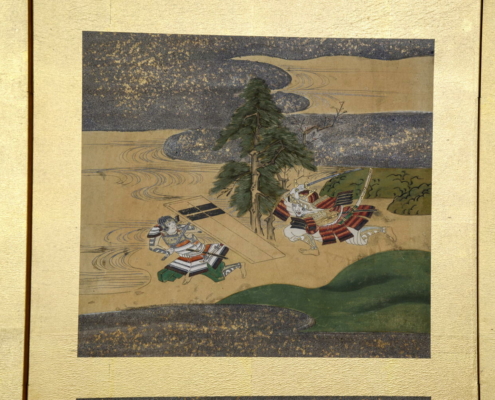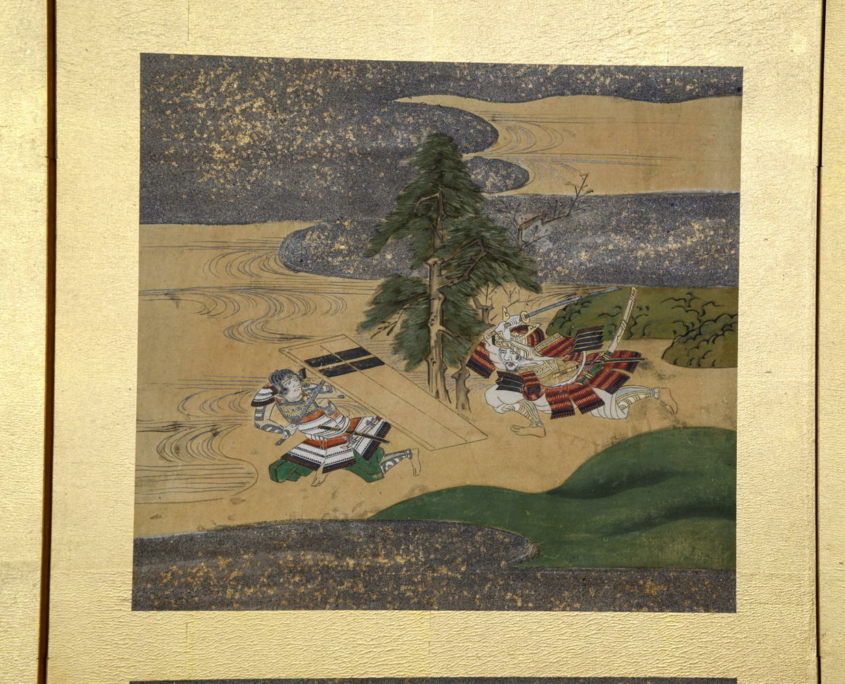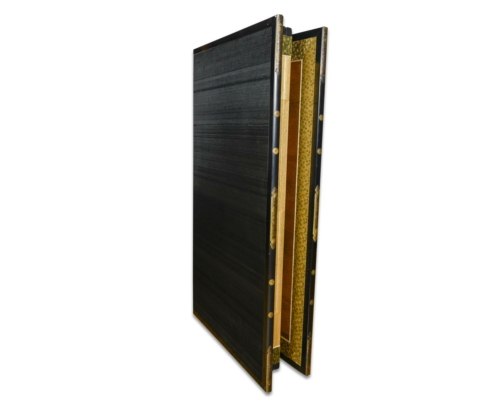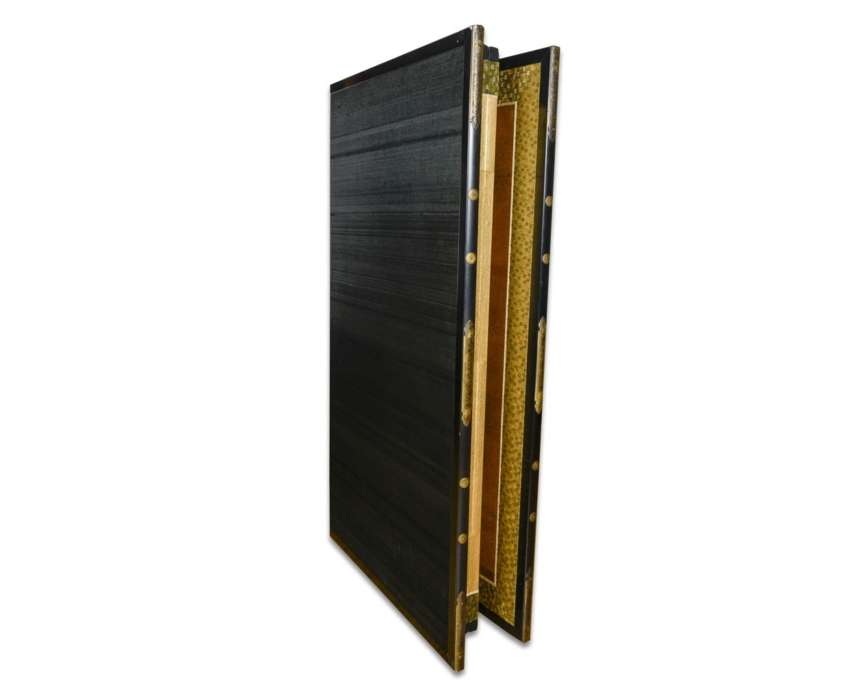GENJI AND HEIKE SCREEN
Reference: 2016-349
Four-panels screen illustrating eight painting scenes from The Tales of the Heike (Heike monogatari).
The Tale of the Heike is considered one of the great classics of Japanese literature. It is a 13th century historical epic recounting the rise and fall of the Taira (or Heike) clan in Japan during the Genpei Wars (1180-1185). It is told by biwa hôshi, blind monks accompanied by their biwa instrument. The story focus on the impermanence of life and ephemeral glory, illustrating the Buddhist concept of emptiness.
Japan – Edo period, 18th century (paintings)
Mounted as 4-panels folding screen later
Height: 33 in / 84 cm – length: 69 in / 175 cm




